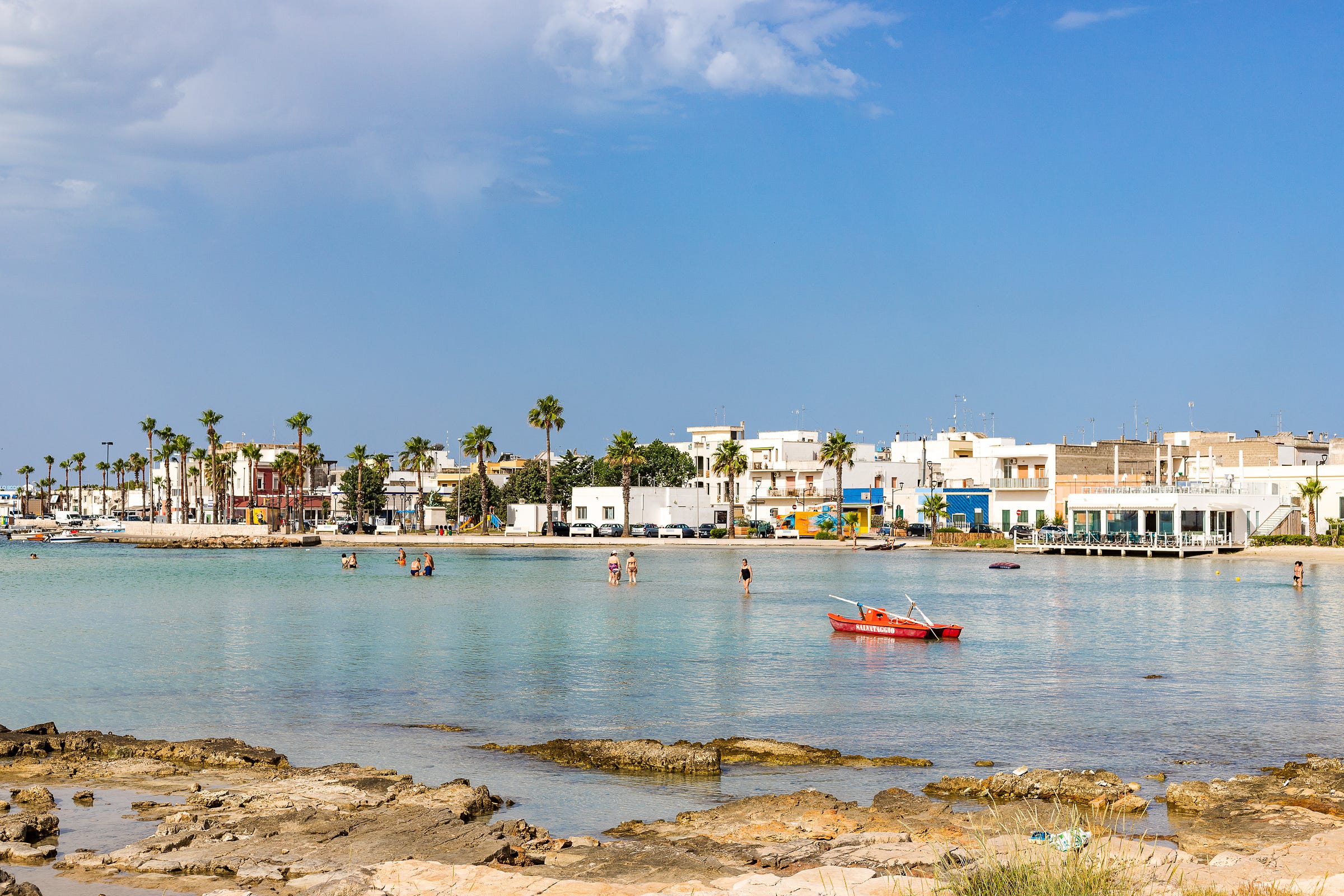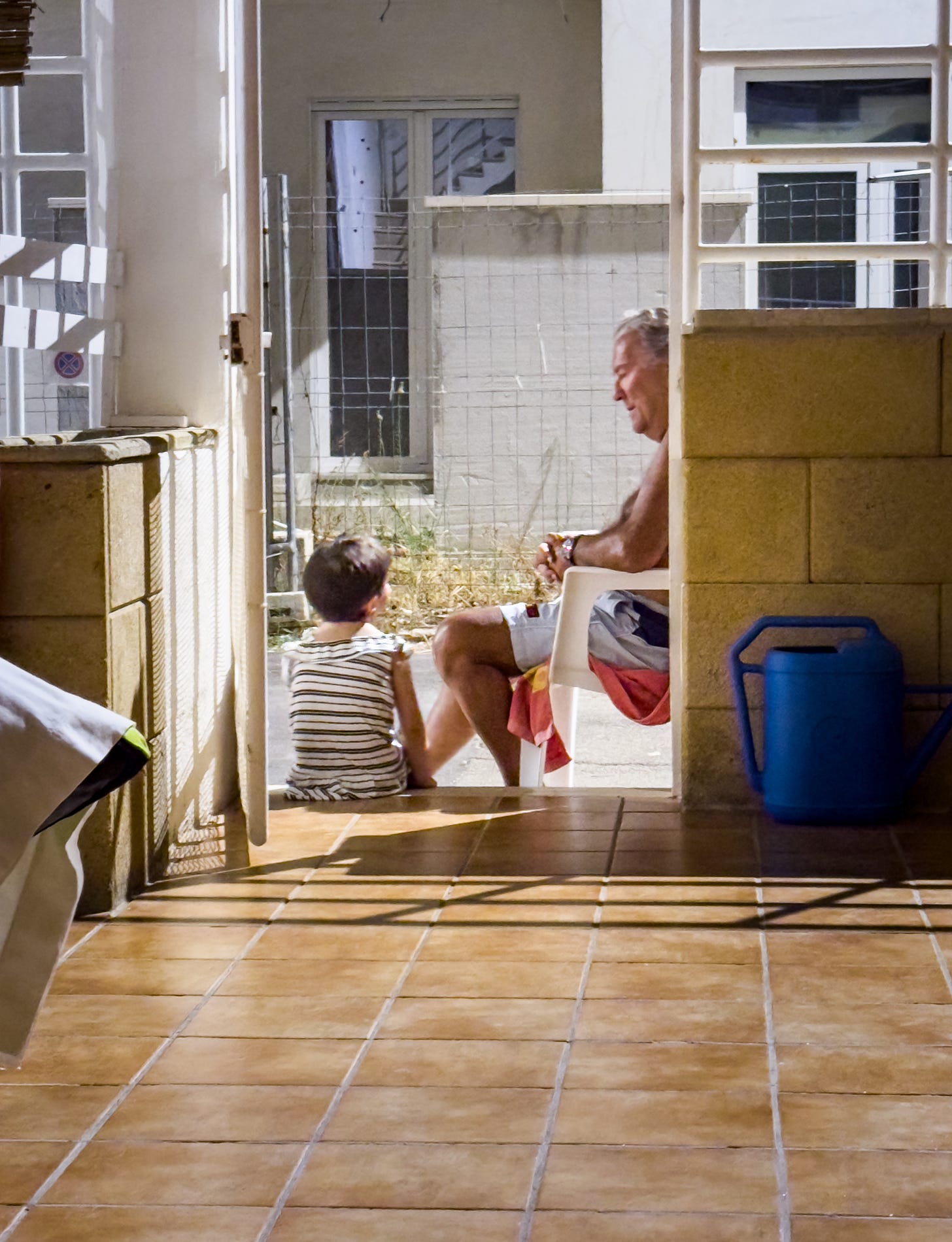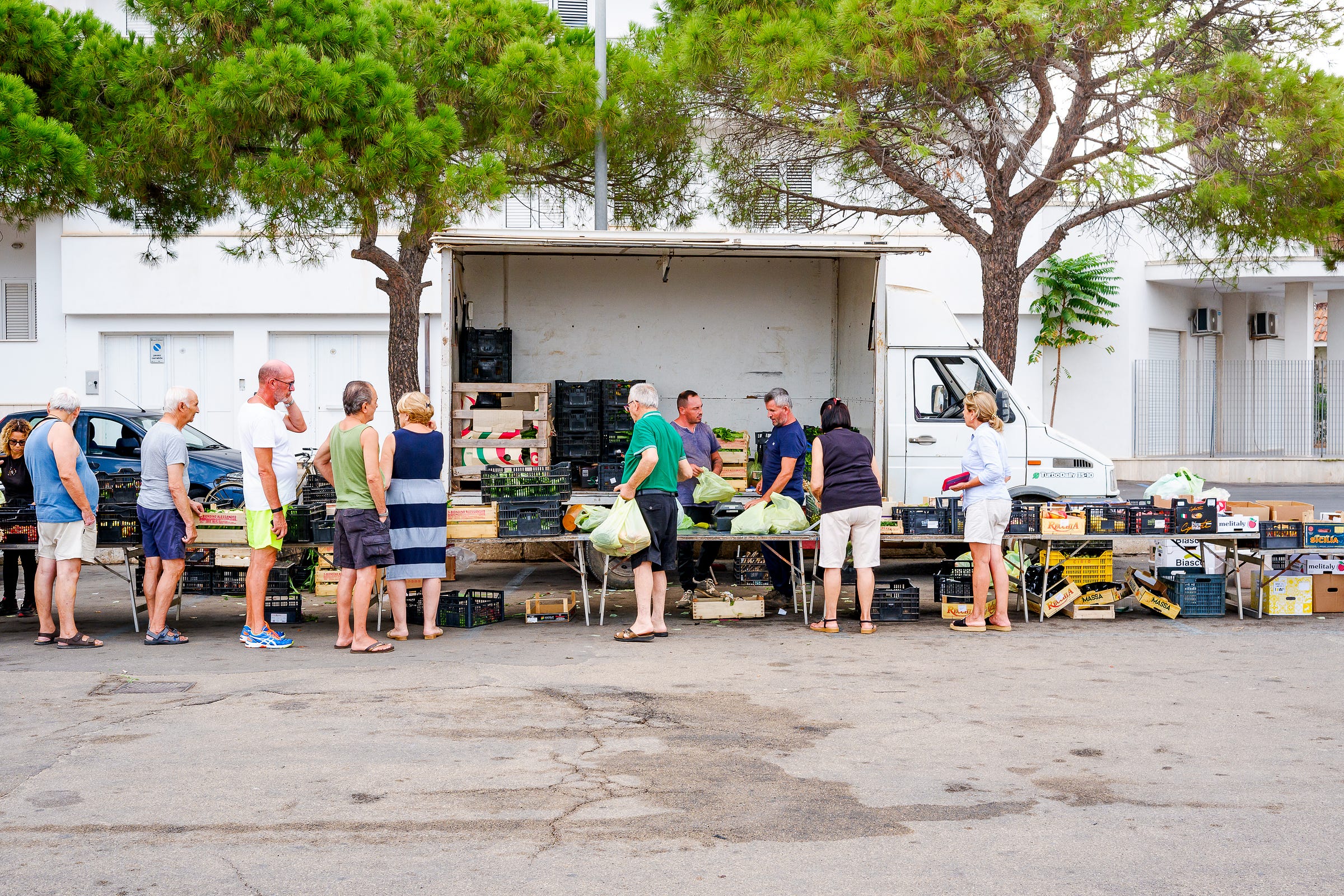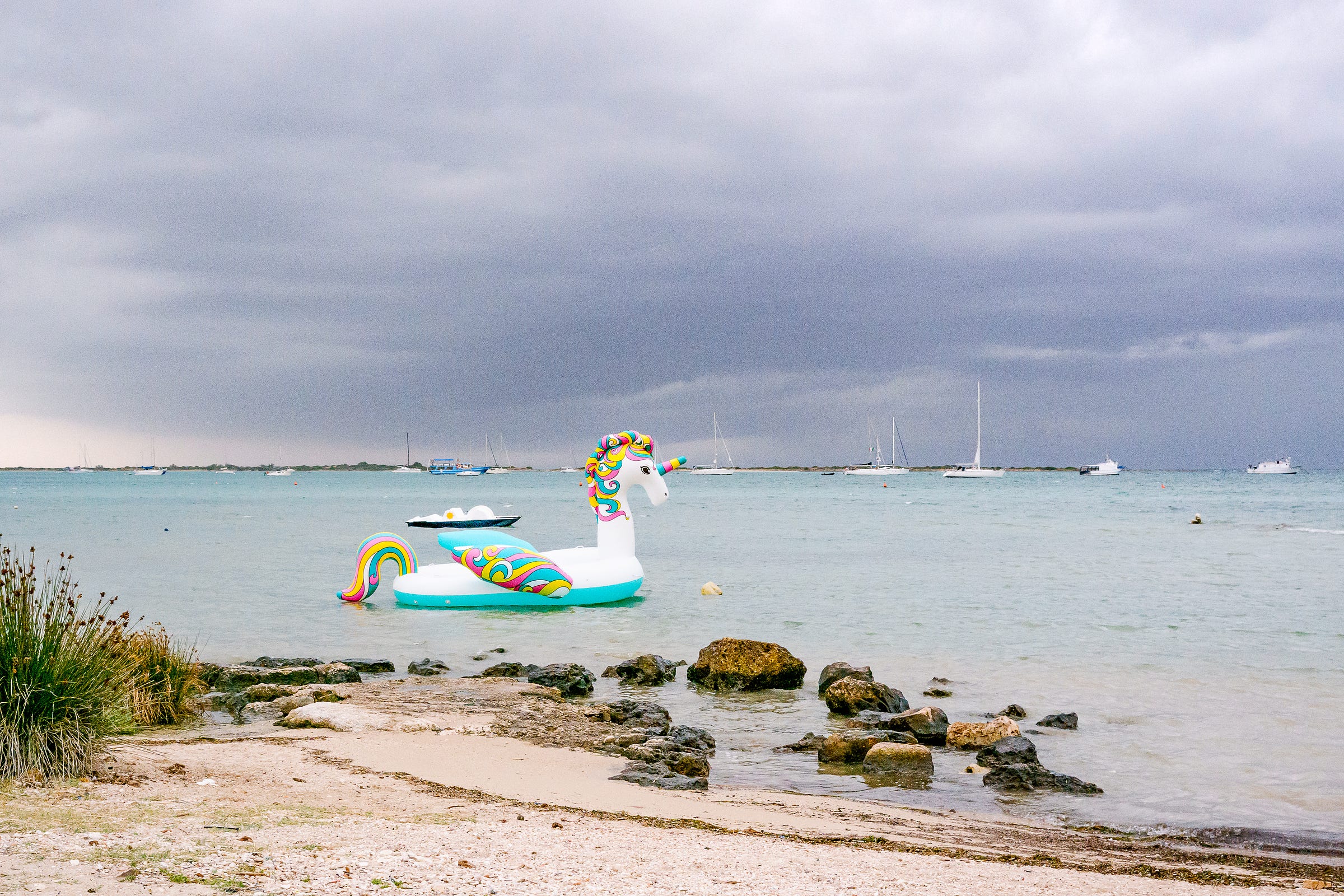Italy: Club Med or the Real Deal?
I’ve grown weary of this flawless Club-Med Italy that always looks the same, always so perfect.
Ciao dear friends and readers, we’re back.
After a halt to our holidays due to a resurgence of Covid that kept us quarantined at home, we finally managed to leave for a road trip to Salento, where we spent a week on the coast with Tommaso’s family. I had originally planned a newsletter on caffè leccese, the espresso on ice with a shot of almond syrup that sweetens and refreshes every morning in Salento. I also wanted to share my market haul, where I bought my annual supply of olives, nuts, sun-dried tomatoes, capers, and pulses.
I’ll send you my memories from Salento in a separate newsletter, exclusively for subscribers, over the weekend. You’ll also find a link to our updated list of favorite places in Salento. And for paid subscribers, look out for a new recipe for dairy-free puff pastries next week.
But today, I want to talk about the economy, politics, and the real Italy.
I know it is not one of my usual food-focused newsletters, but food is political, as perfectly explained by last week in her newsletter. Today, I’m sharing a collection of reflections, born from a conversation I had with Tommaso, that surfaced as we drove back home along the Adriatic motorway. It’s a stunning road that also forces you to confront what lies behind the picturesque tourist towns perched on a hill or facing the sea.
Traditional Apulian masserie turned into luxury resorts, cliffside restaurants with the freshest seafood, and boat trips to remote islands: most Italians cannot afford these experiences. Salaries remain stagnant, while the cost of living keeps rising1. In fact, Italian wages are now lower than they were 30 years ago2.
It took me two weeks to decompress and shed the rose-colored glasses Instagram often imposes on us—glasses that filter out only the beautiful, the polished, the postcard-perfect views, the images that don’t disrupt a perfectly curated feed, the storytelling of a long-coveted trip to Italy. Honestly, I’ve grown weary of this flawless Club-Med Italy that always looks the same, always so perfect.
What I appreciated about our holidays—besides our stay in Salento, of course—was the journey itself, our road trip South, where I found a more disheveled, yet authentic, raw Italy. This is the Italy I want to live in and experience, the Italy that forces you to ask questions.
I found a country that bears the scars of structural issues: drought, water shortages, neglected suburbs, struggles with renewable energy, and streets piled with trash. We are the same people known globally for fashion, art, and genuine, delicious food, yet we leave garbage bags on our beaches. Why? Sure, it’s partly a matter of bad behavior, but it’s also because infrastructure, like waste bins, can’t keep up with the ever-growing tide of tourism.
This trip made me reflect on a different Italy from the glossy one in magazines or on social media. Yet, this is the reality for much of the country.
Take Salento, for instance. Salentu: lu sule, lu mare, lu ientu—the sun, the sea, the wind, and so much more, not all of it positive.
In the past two years, we visited Tommaso’s family in Lecce only in winter and spring, avoiding the hoards of Italian and foreign tourists that flood the local towns and beaches in July and August. Sure, if you enjoy crowds, beach clubs, and nightlife, it’s still the perfect holiday for you, but if you prefer a more relaxed atmosphere, like us, September is ideal.
It would be hypocritical to deny the benefits tourism has brought to Salento, but sometimes we miss the untamed spirit that was still alive some 30 years ago when Tommaso used to spend all his summers there with his mum’s family. Today, tourism has brought wealth, but also a disconnect from reality. It’s filling the streets, restaurants, hotels, and beaches with people, but also robbing many towns of their souls.
Driving through the olive fields devastated by Xylella3, I was confronted by a ghostly landscape: olive trees denuded of their leaves, abandoned olive groves, deserted fields, and masserie, the local farmhouses, not yet transformed into luxury resorts. And yet, these stones tell stories. Who lived there before? What did they cultivate? Olives? Wheat? And today, what would I do with that farmhouse and that land? For a moment, I imagined a new life there, but those questions lingered as we drove through a reality seemingly frozen in time, yet, like everything else, rapidly changing.
Next to the historic town centers with flamboyant lights, you find low modest houses patched up each year to fight salt damage, with faded plastic chairs that have served for generations.
This is where we spent our holiday. This is the sea life Livia is lucky enough to experience, just as Tommaso did 30 years ago. One night, Livia sat on a step outside the house, talking endlessly with Tommaso’s uncle. He was savoring a faint breeze at the end of a sweltering day under the thumb of the Sirocco, the hot, humid wind blowing from Northern Africa across the Mediterranean.
During this trip, I discovered tiny supermarkets with faded posters and signs I’d never seen before. I saw vendors returning year after year with their rusty Ape Car on the same street corners, offering their prickly pears and jujubes, while market stalls displayed heat-scorched vegetables, yellowed zucchini, and winter tomatoes, with thick skins that, barely watered, last for months stored in a wooden box or hung in a cool, dark spot. Who tells their story?
A couple of years ago, when we visited Salento in June, I spotted on a market stall a little jar of pickled fennel flowers. How interesting, I thought. Intrigued, I asked the vendor for the price and was shocked to hear 20 euros. What?? 20 euros?? 20 euros for a tiny jar of pickled fennel flowers, in a recycled jar no less!
At my startled reply, the vendor turned to a friend and said: The spending tourists haven’t arrived yet. I often wish I had his boldness in valuing my own work!
Next to this experience, though, there’s also my favorite stall at the Thursday market in Porto Cesareo, where I stock up on capers, sun-dried tomatoes, almonds, hazelnuts, dried oregano, olives, and pulses. Here, local almonds sell for 8€ per kilo, while imported almonds from California, considered superior, cost 12€ per kilo. In contrast, local beans harvested in nearby sun-drenched fields go for 4€ per kilo, while imported beans and chickpeas from Canada cost just 1.50€ per kilo. Choosing what to buy and valuing where your ingredients come from is a political act.
And then, there are the beaches. Next to the picture-perfect coves, you find ordinary beaches, eroded by the sea, where Mediterranean vegetation spills onto the sand.
Here, in September, everything slows down. After 10 years, I now know where to place my feet, following an imaginary path through the rocks to reach to shoal. After five minutes of careful stepping, you arrive at a sandbank with shallow water, turn towards the coast, and take in the view: a stretch of sun-bleached low houses, palm trees, an abandoned lighthouse, a parking lot, a couple of fishermen, a giant inflatable unicorn, and a group of women lined up, sitting in old chairs, either reading a book or showing photos of their grandchildren on their phones.
This is the vacation we had, and will have again: Salento in September, far from the crowds of July and August, when the land feels overwhelmed and loses its humanity.
Perhaps this is the real Italy. Not the postcard version, not the polished image, but the Italy that lives and breathes in the folds of everyday life. It’s here, in these small moments and choices—like deciding whether to buy local or imported goods—that the future is shaped. Because food is politics, and so is the way you choose to spend—or not spend—your holidays.
I’m so curious to hear your thoughts in the comments.
Considering a purchasing power parity, Italian wages on average are 15,000€ less per year than German wages, almost 10,000€ less than French wages, and almost half of American wages. Data from this article in Italian, Perché in Italia gli stipendi sono così bassi.
You can read these two articles if you want to learn more about Xylella. The Farmer Trying to Save Italy’s Ancient Olive Trees on GastroObscura and Fear of Ruin as Disease Takes Hold of Italy’s Olive Trees on the NYT.











Beautiful essay. My sentiments exactly even though I was born and raised in New Jersey (USA). My father was born in a little town called Gambellara (close to Verona) and married my American mom, who was born to Italian immigrants. The first time I visited Italy in '74 (our very first trip was by boat at the age of two, which I don't remember. That's how old I am. ;) was memorable - no tourists, not the hordes of people there were today in Verona, Venice, etc. I recall standing in the middle of St. Mark's Square, where there were more pigeons than people. I visited the Basilica, spending hours with my mouth agape, looking at the artwork and the architecture. Similarly, we walked through the grounds of Castello Soave before it was turned into a tourist spot and gated - not one other person in sight. So many Americans and other nationalities are trying to obtain dual citizenship like never before with the intent of buying a summer home. That will only exacerbate the issues you raised here. Food for thought for all of us! Grazie Mille. ❤️🇮🇹🇺🇸
Thank you, Giulia, for highlighting what makes Italy a spectacular country. I'm heading back to Sicily with my husband and mum in a few weeks with the aim of moving there soon. The village where I was born has been affected by the likes of cheap import shops and ikea, and progress. Il Corso is barely looked upon these days now that young people can do what they want, which is great, but it's a change that affects the long street guarded by the Madonna, where once there were local vendors, makers, pasticcerie. But... I hear my mother tongue everywhere, my mother can visit her old friends she used to embroider with at the convent, their kids, family. Even though I left when I was 2, we have a common thread. Everyone knew my families all the way back. And the Sagre and Feste are sublime. It's a village for locals. There's a bit to see but it's not a tourist town. Like you, I love the local markets and stock up on olives and cheese in Ragusa. Come to Sicily!